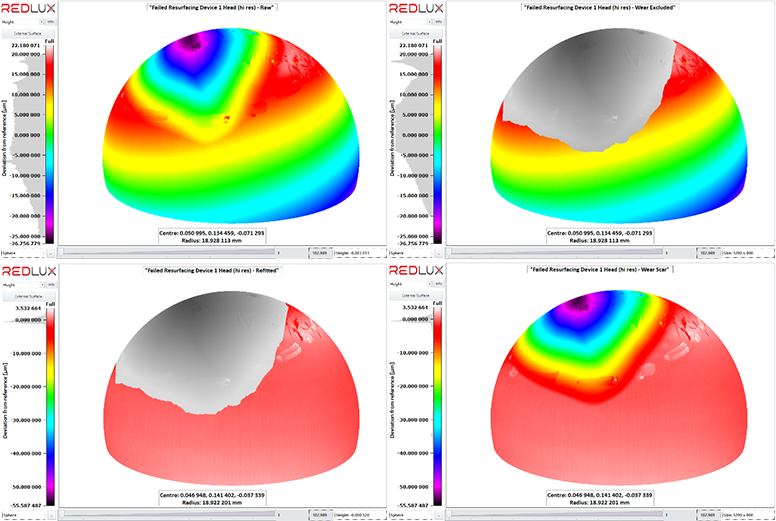
We often get asked about how best to analyse wear with a view to measuring wear depth and wear volume once the wear scar has been measured with a CMM.
We are explaining the steps here at the example of an artificial hip joint, but the same principle is transferrable to other wear scars.
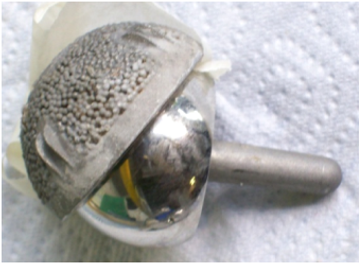
The wear scar and the surrounding area have been measured. In this particular case, the hip head has been measured on an OrthoLux 4 AB with 901,800 data points.
This is usually achieved by fitting the nominal shape to the surface. Initially this includes all data points:
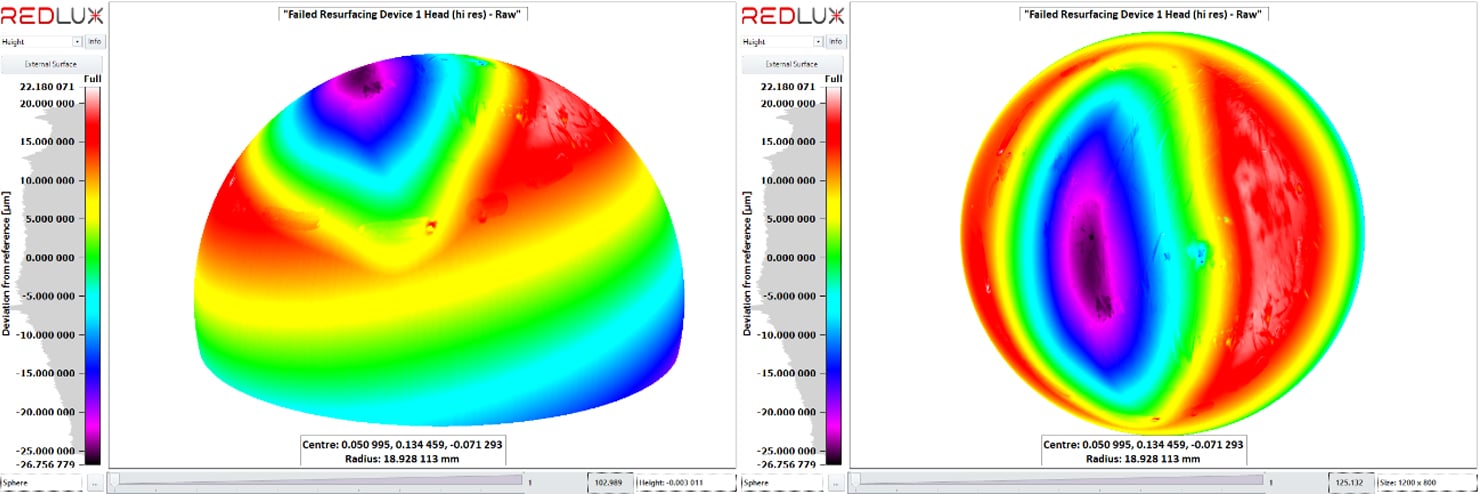 Raw data set after initial sphere fit
Raw data set after initial sphere fitFrom this initial fit, it is possible to separate the original surface, which is later used as the datum for wear measurements from the wear scar.
The next step is to exclude measurement points on the wear scar and material accumulation around the wear scar. This important step allows establishing a clear datum surface for further calculations.
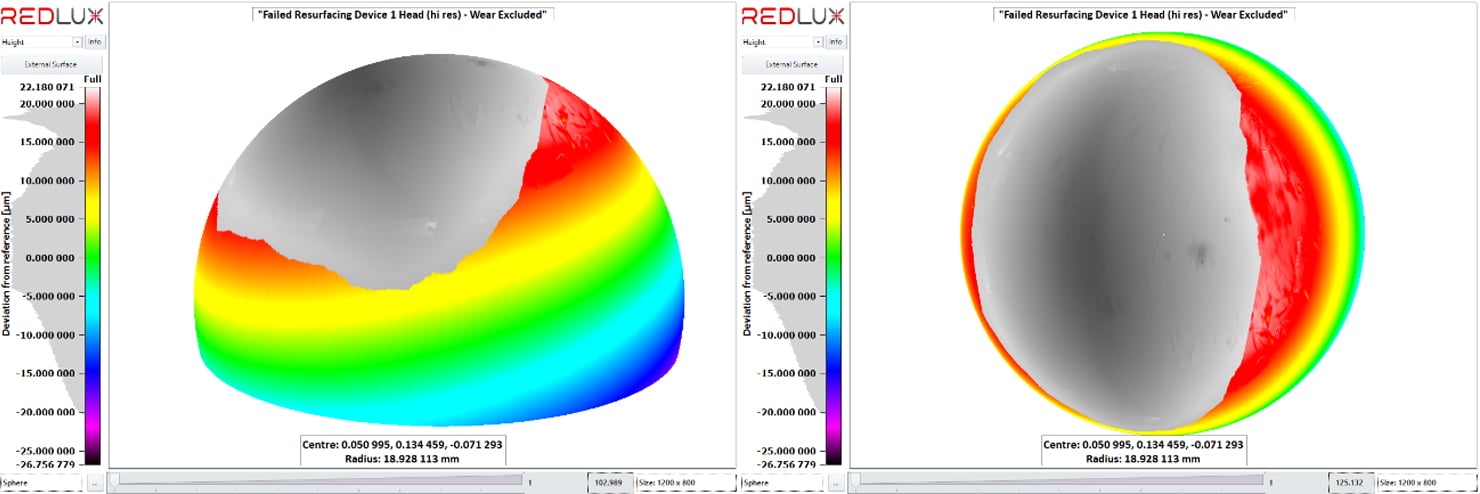 Wear scar excluded
Wear scar excludedNow that the original, unworn surface has been established as a datum, the sphere fit can be repeated.
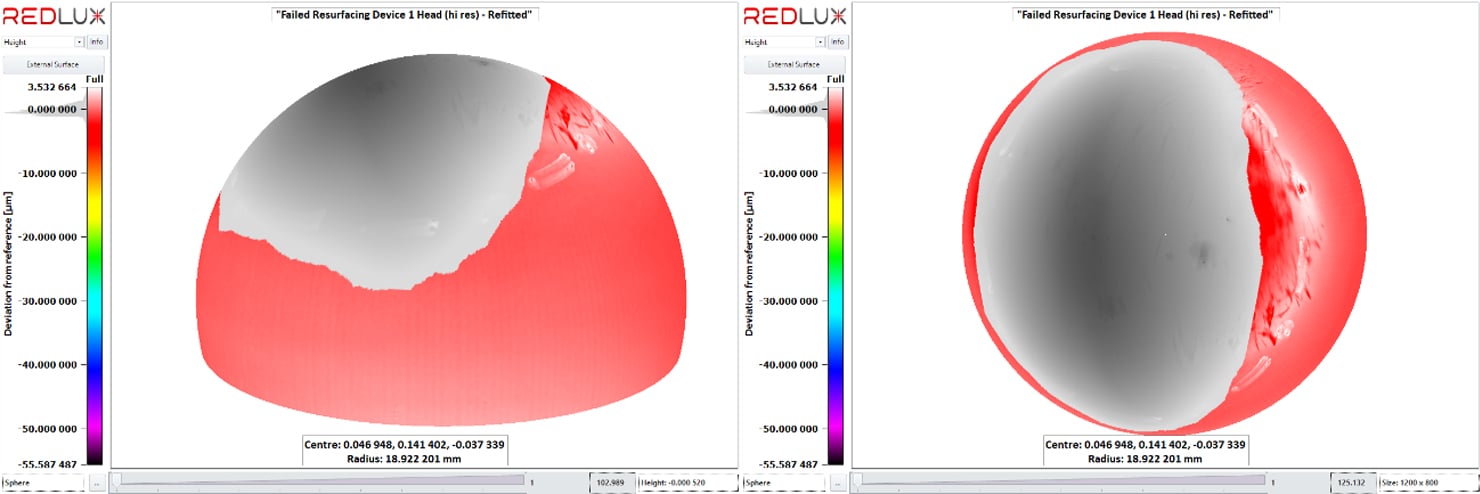 Sphere fit to datum surface
Sphere fit to datum surfaceSteps 2 and 3 might have to be iterated a few times until all of the wear scar and material accumulation have been isolated and removed (note the white region of deposited debris which has been highlighted with a marker pen to the right of the wear scar).
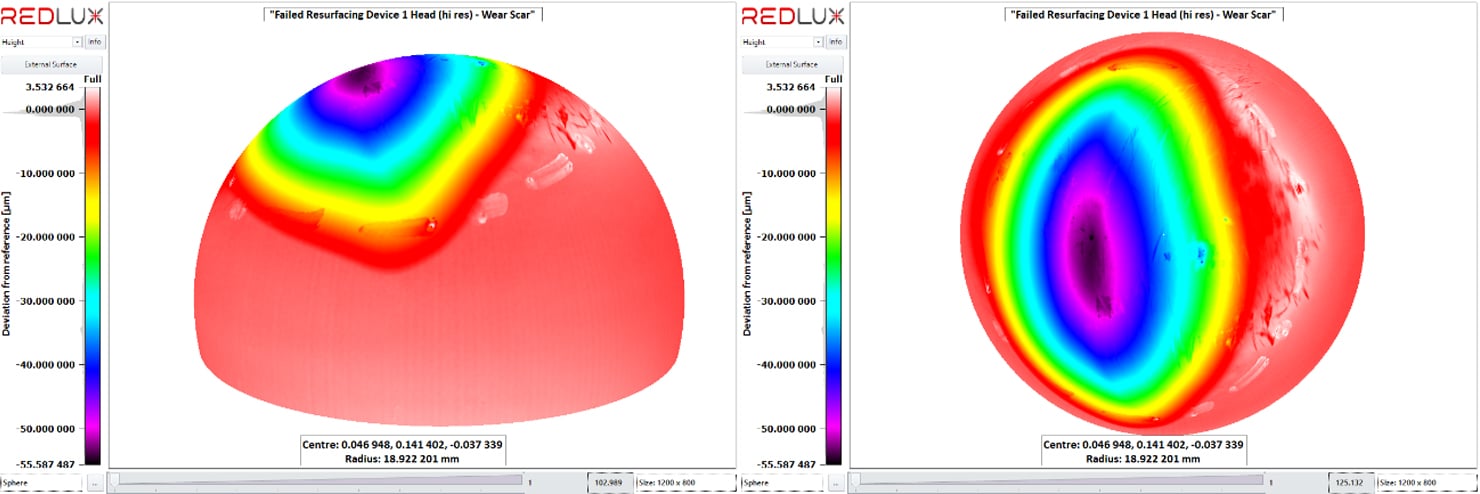 Sphere fit to datum surface
Sphere fit to datum surfaceIn this case, the wear scar is 53.7 µm deep and the wear volume is 18.6 mm³.
We’re helping organisations all over the world reap the benefits of world-leading metrology. Speak to our experts.